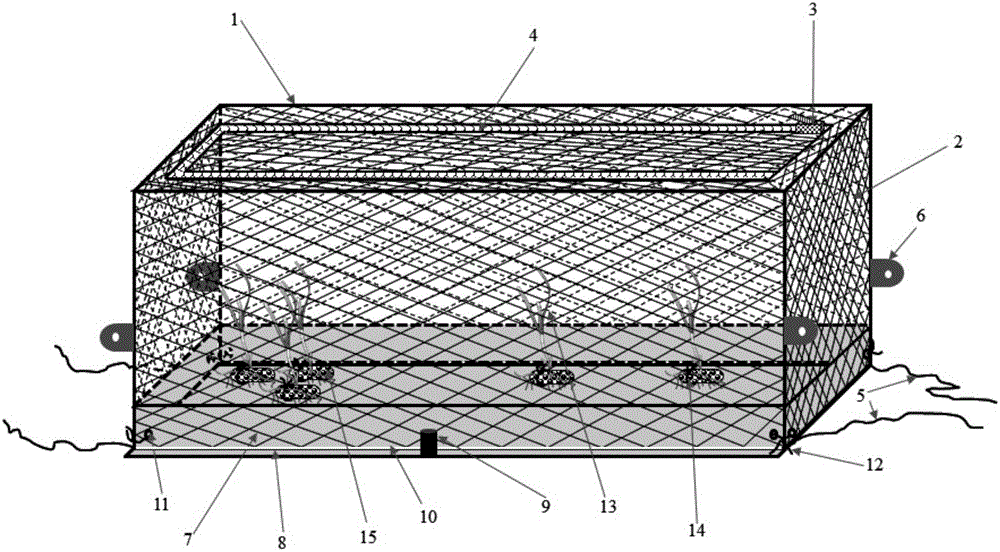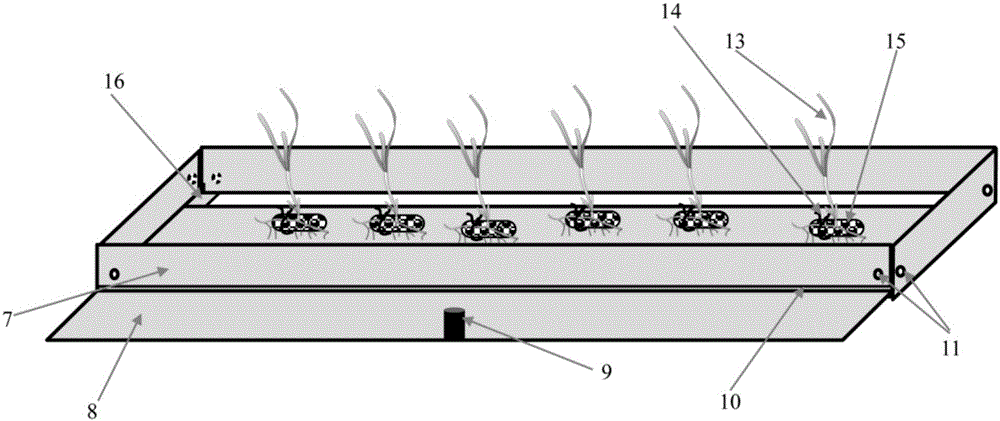Seaweed transplanting device and seaweed transplanting method applied to coral debris bottom materials
A technology of coral debris and seaweed, which is applied in the field of seagrass transplantation device and seaweed transplantation, can solve the problems of brittleness, low strength, and susceptibility to water flow disturbance, etc., and achieve pollution-free transplantation, improved survival rate, and good transplantation effect Effect
- Summary
- Abstract
- Description
- Claims
- Application Information
AI Technical Summary
Problems solved by technology
Method used
Image
Examples
Embodiment 1
[0022] like figure 1 and figure 2 As shown, the seagrass transplantation device applied in the coral detritus substrate of the present embodiment includes a plant growth groove and a plant anti-wave cover that can cover the plant growth groove;
[0023] Described plant growth groove is rectangular shape, comprises four frames all around and bottom plate 8, all is made of plexiglass, is respectively fixed with 1cm wide lower bottom side supporting plate 16 at the bottom of relative left and right frames, on the front side Below the frame 7 (60 cm x 40 cm x 7 cm in length, width, and height) there is a 0.5 cm high bottom plate entrance and exit 10, and the lower bottom plate 8 (60 cm x 42 cm in length and width) is placed on the lower bottom side support plate 16 , the front end of the lower bottom plate 8 passes through the entrance and exit 10 of the lower bottom plate, the lower bottom plate can move back and forth on the lower bottom side supporting plate, the front end of...
PUM
 Login to View More
Login to View More Abstract
Description
Claims
Application Information
 Login to View More
Login to View More - R&D
- Intellectual Property
- Life Sciences
- Materials
- Tech Scout
- Unparalleled Data Quality
- Higher Quality Content
- 60% Fewer Hallucinations
Browse by: Latest US Patents, China's latest patents, Technical Efficacy Thesaurus, Application Domain, Technology Topic, Popular Technical Reports.
© 2025 PatSnap. All rights reserved.Legal|Privacy policy|Modern Slavery Act Transparency Statement|Sitemap|About US| Contact US: help@patsnap.com


